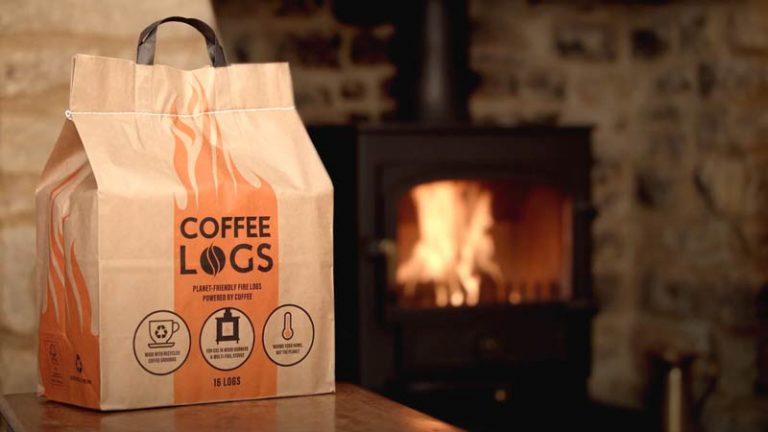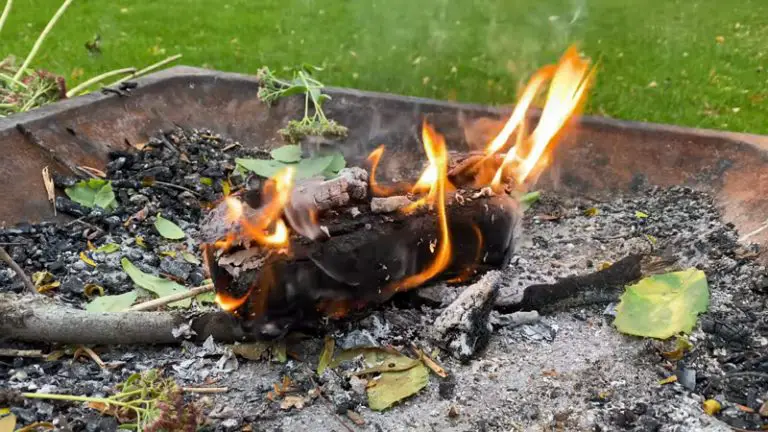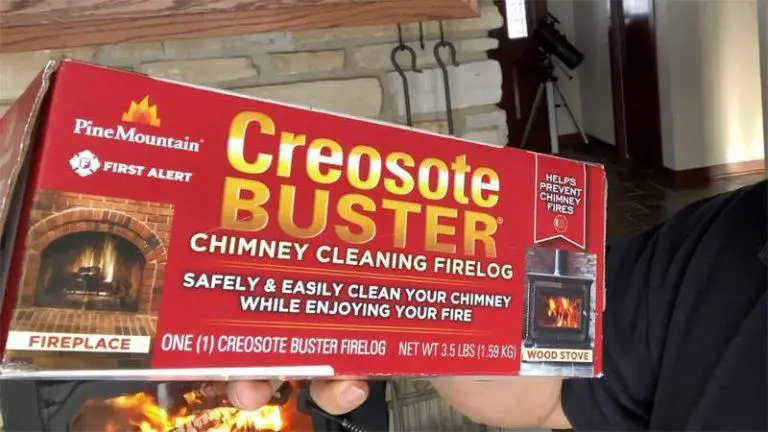How Does A Creosote Cleaning Log Work
Burning fireplace sweeps lowers the fire danger in your home, making it a safe and easy way to clean the chimney. There are different types of chimneys that require different sweeping techniques- be sure to use the correct supplies for the job.
It’s important to chase creosote from a Chimney before it causes any serious damage- using sweeps is one safe way to do this. Always wear protective gear when cleaning a Chimney, including gloves and goggles, and use only approved cleaners. If you’re ever unsure about how to clean or protect your chimney, don’t hesitate to call an experienced professional like Clean Sweep Services.
You'll Learn About
How Does A Creosote Cleaning Log Work?
Chasing creosote from a chimney is safe and easy with the help of a Chimney Sweep. There are different types of chimneys that require different sweeping techniques, so be sure to use the correct supplies for your particular chimney.
It’s important to clean your chimney regularly in order to avoid lowering the fire danger in your home. Burning fireplace sweepings can also lower the fire danger if not handled correctly, so make sure you have the right safety gear before beginning this task.
Finally, always wear protective gear when cleaning or chasing creosote from a Chimney – it could potentially cause serious injury.
Burning Chimney Sweepings Lowers The Fire Danger
A creosote cleaning log is placed in the fireplace before a fire is lit to burn any debris that may have accumulated over time. Burning the chimney sweepings lowers the fire danger because it removes combustible materials such as leaves, sticks, and other flammable materials from the chimney.
This type of clean-up should be done at least once a year to protect your home from damaging fires caused by accidental starting. Make sure you have an adequate supply of creosote cleaning logs on hand so you can quickly take care of this important task when necessary. Keep children and pets away from open flames while performing this chore – firefighters often use these same types of fires to battle blazes.
Cleaning A Chimney With Sweeps Is Safe And Easy
Sweeps are a safe and easy way to clean your chimney. Simply place the sweeps over the top of the chimney, then use a long pole to push and pull them up and down the chimney.
Be sure to wear safety gear, including goggles and gloves, when cleaning your chimney with sweeps.
Require Different Sweeping Techniques
Creosote cleaning logs are essential for removing built-up chimney soot and grease. The types of sweeping techniques that are necessary will vary depending on the type of chimney you have.
Make sure to use the correct sweeping equipment for your chimney and sweep at the correct speed to avoid damaging it. It is important to clean your chimney every year to keep it in good condition and free from build-up.
You can find a creosote cleaning log at most hardware stores or online retailers.
Use The Correct Supplies
Creosote is a sticky, black tar that forms on the walls of your chimney as you burn wood or other fuels to generate heat in your home. The creosote will eventually build up inside the chimney and block the flue, preventing smoke from leaving the house and causing a fire.
There are several different ways to clean an old chimney; using a cleaning log is one of them. A cleaning log consists of logs that are tied together at one end with strong string or twine. You place this end into the top of the Chimney where the creosote has built up and sweep it back and forth across all surfaces until all Creosote is removed.
Do creosote cleaning logs really work?
Creosote cleaning logs are often recommended by fire officials as a way to clean chimneys. Sweeping can actually spread embers and sparks upward if not done correctly, potentially causing more damage down the line.
If you do sweep with a creosote cleaner log, be very careful not to damage the wood of your chimney – this could constitute negligence on your part. Finally, keep in mind that sweeps can also cause water damage to ceilings and walls if they get stuck in cracks or crevices- always contact a professional for help before beginning any kind of cleanup job.
How often do you use Creosote Sweeping Log?
Sweep Creosote Logs on a regular basis to keep the chimney clean and in good condition. Sweep Creosote Logs every 60 fires to prevent the build-up of creosote and debris.
Keep track of how many fires you use the chimney each month by recording it in a journal or spreadsheet. Cleaning the chimney regularly is important for preventing serious fire risks inside your home.
How does creosote remover work?
Creosote is a harmful by-product of wood burning that can build up on the inside of your furnace, chimney, and other flues. Creosote remover uses high pressure to break down the creosote into harmless substances.
This process destroys any potential harm it could cause to your home or property. Creosote is a material that is used in many different applications, including wood-burning fires. The heat from the fire will release active ingredients which can cause damage to the materials around it.
When creosote burns, these active ingredients are released into the air and can form an oily residue on surfaces nearby. This residue contains harmful substances which must be removed before your home or business can be safely restored.
The best way to remove creosote is through a process called thermal oxidation – this involves heating the material until it releases its active ingredients, which then turns into powdery ash at room temperature.
Because creosote doesn’t float on water as other materials might do, it falls down and accumulates near the bottom of your fireplace where it can easily be disposed of without affecting surrounding areas. Make sure you have all the supplies you need before beginning work – including gloves, face protection, and eye protection – as exposure to these chemicals could lead to skin irritation or even chemical burns.
How long does it take a creosote log to burn?
It takes a creosote log about two days to burn completely. This is because the wood on a creosote log contains oil and other substances that help it burn slowly.
Burns for 90 Minutes
When you sweep with a creosote sweeping log, the heat and smoke from the burning logs will quickly incinerate any build-up of creosote on your chimney wall. This prevents future fires from starting in this area and ensures that your chimney is burning more completely.
Prevents Build-Up of Creosote
If tar builds up on the inside of your chimney wall, it can prevent the firewood from being burned completely and cause dangerous sparks to fly out into the atmosphere. By spraying water onto your chimney every few weeks while sweeping with a creosote sweeping log, you can keep this problem under control.
Improved Draft Helps CSL Burn More Completely
CSLs (charcoal stove lighters) require good airflow in order to burn properly for a long time; if there is too much obstruction or resistance within an fireplace or room where a csl is located, combustion will be slow and inefficient leading to decreased fuel efficiency as well as increased emissions levels.
Makes Fire Safer and Easier To Control
Will a hot fire get rid of creosote?
Of course. For about 30 minutes fire can remove creosote. The most common cause of creosote buildup is a buildup of soot in your chimney. Soot and creosote are both carbon-based chemicals. If you have a buildup of soot in your chimney, you’ll need to use a chemical cleaner to remove it.
Burning Aluminum Cans In A Hot Fire
If you want to clean up creosote build-up from an old chimney, the best way to do it is by using a hot fire. This process will burn off the creosote and leave your chimney free of any obstructions. Make sure that there is no flammable material close by when you start the fire – if there are, be careful not to set anything on fire.
Cleaning Chimney After Creoite Removal
After removing creosote from a chimney with a brush, it’s important to clean up all of the debris that was left behind. Use water and soap to remove all of the residue and keep your home safe against further problems related to creosote buildup.
Removing Creosote with a Chimney Brush
In some cases, burning down or cleaning out an old chimney may not be enough – depending on the severity of damage caused by creosote accumulation. If this is the case, hiring a professional can help get rid of all traces of this harmful substance quickly and safely.
Does burning aluminum cans remove creosote?
Yes, burning aluminum cans does remove creosote. Creosote is a form of tar that can accumulate on metal surfaces over time. Burning the cans removes the tar and other debris, which helps prevent future corrosion.
Yes, burning aluminum cans can reduce the amount of creosote that is present in your car. The higher heat will burn off any existing creosote, and there is no impact on built-up creosote levels. However, the effectiveness of using an aluminum can chimney depends on a number of other factors such as the type of fuel used, how often it is burned, and ambient conditions.
To Recap
A Creosote cleaning log is a handy tool for cleaning up creosote build-up. By using the correct proportions of water and detergent, you can safely remove any creosote while preserving your wood’s natural finish.




